dwashbur
Contributor
Okay, here's the first one. This guy was smaller than my little fingernail. The first picture is to give perspective, because that's my finger at the lower left:
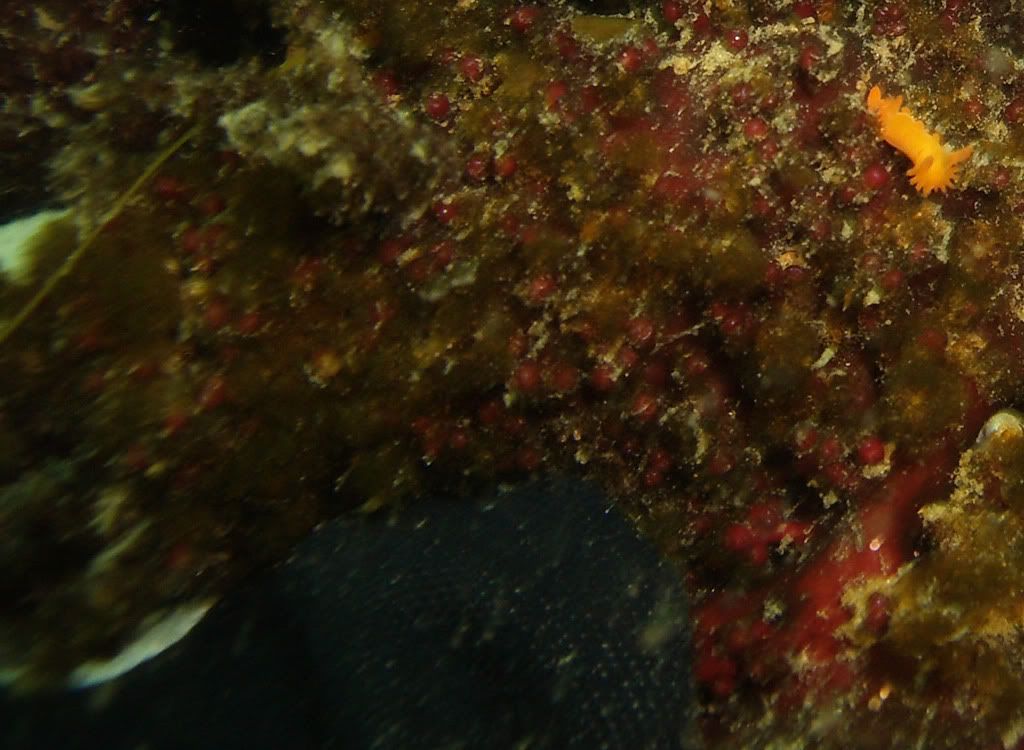
Here are a couple of more close-up shots. He was so small, we couldn't even tell he had the frontal veil until we were looking at the pictures. Based on the shape and the number of processes on the veil, I'm wondering if perhaps it's a baby Triopha catalinae or some such?

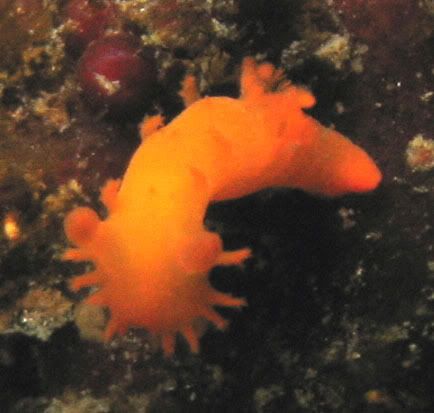
The next one was only marginally bigger, and very nearly the same color. But this one is clearly a dorid of some kind. My first thought was a Rostanga pulchra but the rhinophores are wrong. I can't find anything for a second option. These are pretty much all the pictures we took of him.
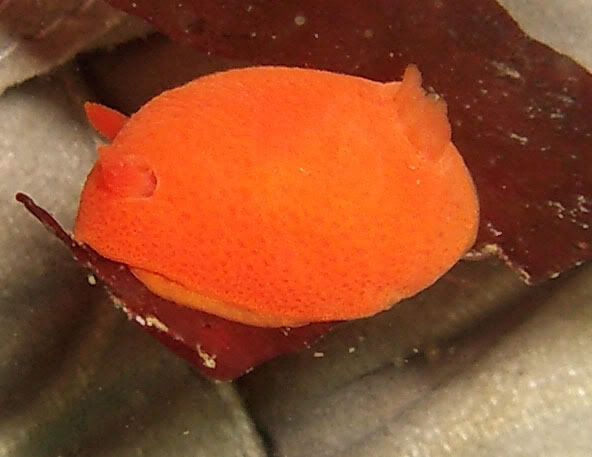
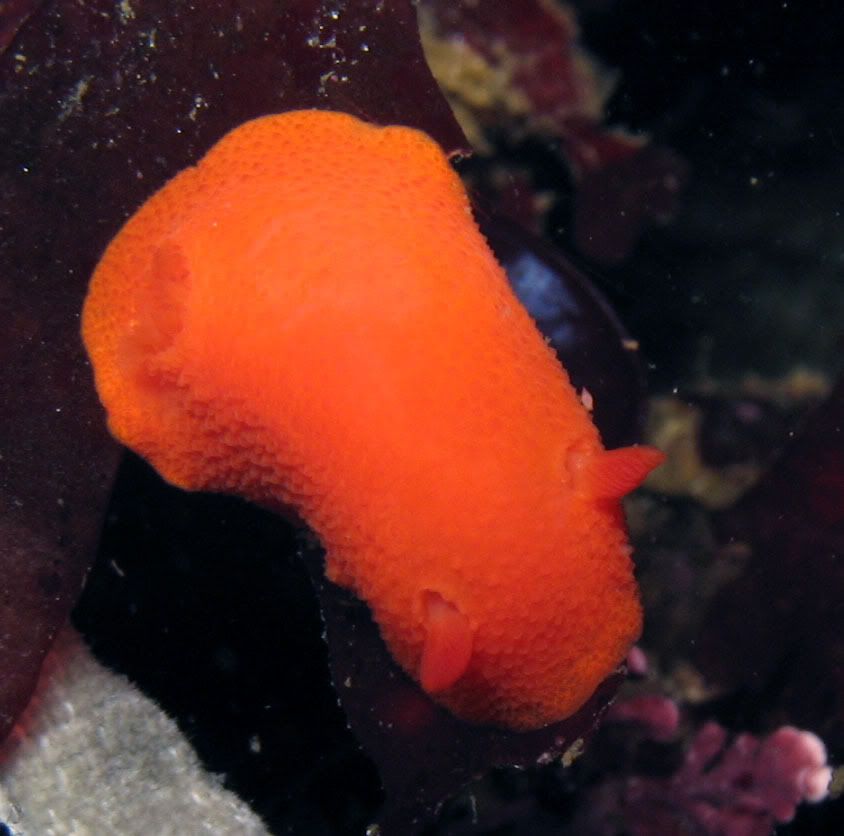
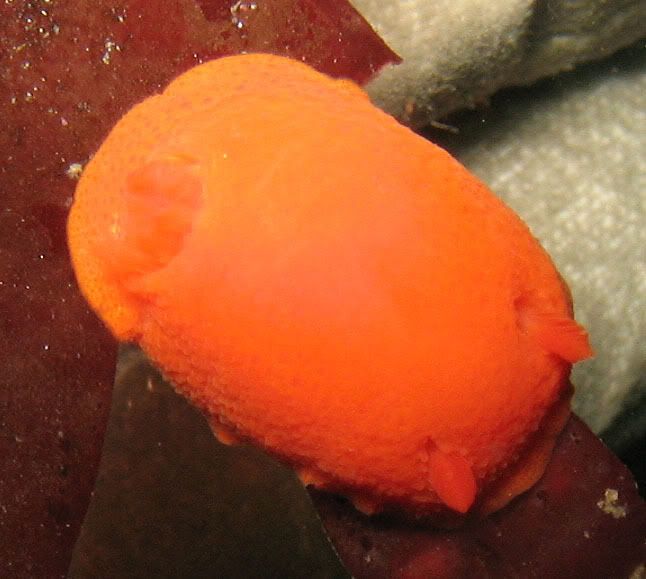
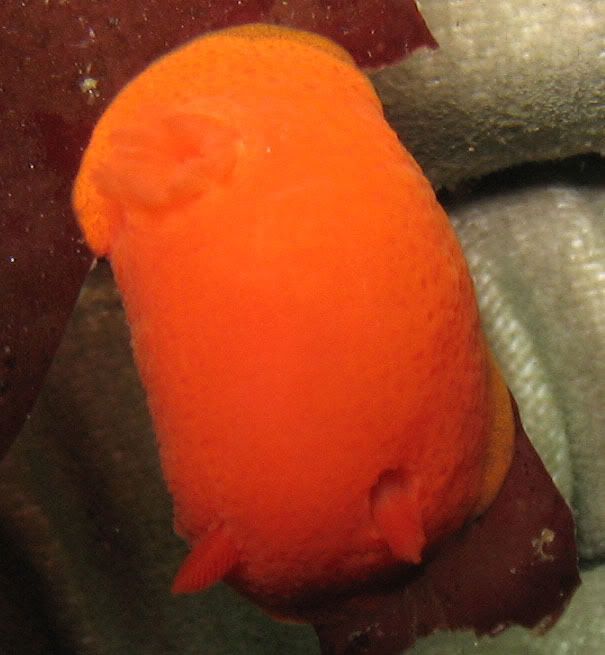
And finally, this dorid was about the size of your average Doris montereyensis, but we've never seen markings like these before. Our first thought was Thordisa bimaculata, but the two spots on this guy are more like rings, and his plume seems unique. That's definitely how he carries it, it's not being pulled in because these pix were taken over a period of over a full minute. We frankly have no idea what he is.
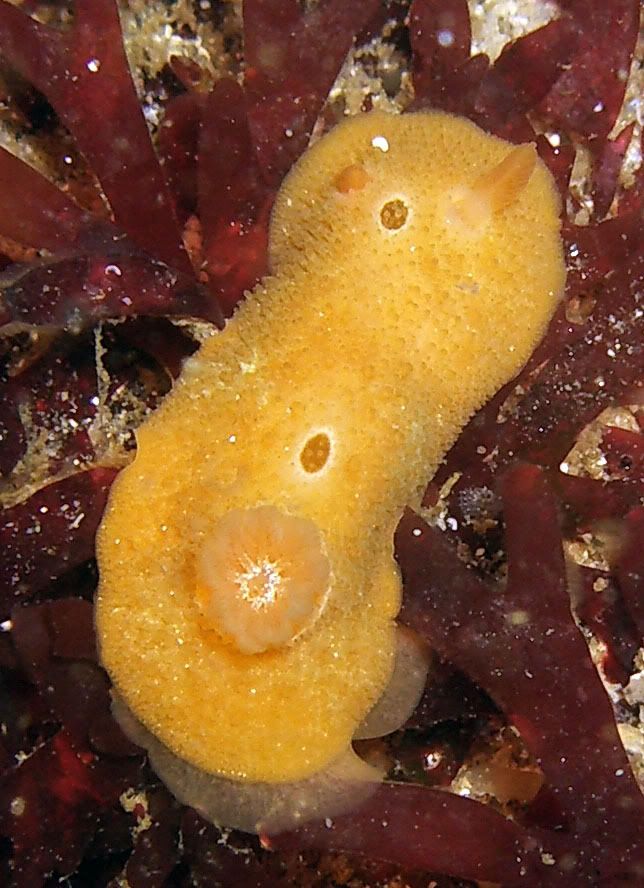
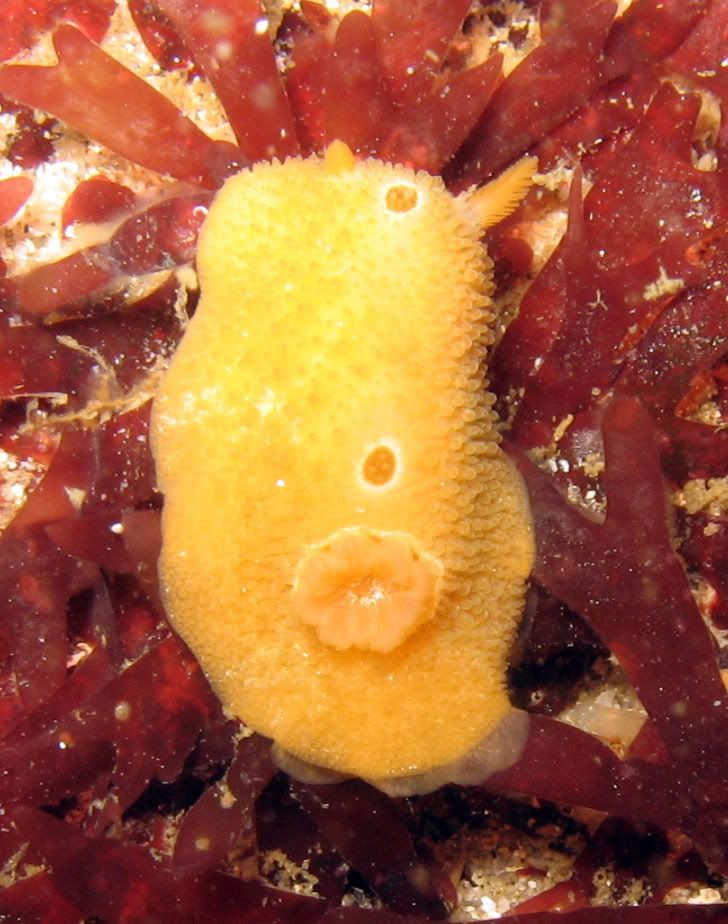
Those are our three new-to-us nudibranchs. This last one might be a nudibranch, but we're not sure. It seems to have a slug-like foot at the upper right, and the lower center of it looks like it might be a pulled-in branchial plume. But we can't find anything that matches it.
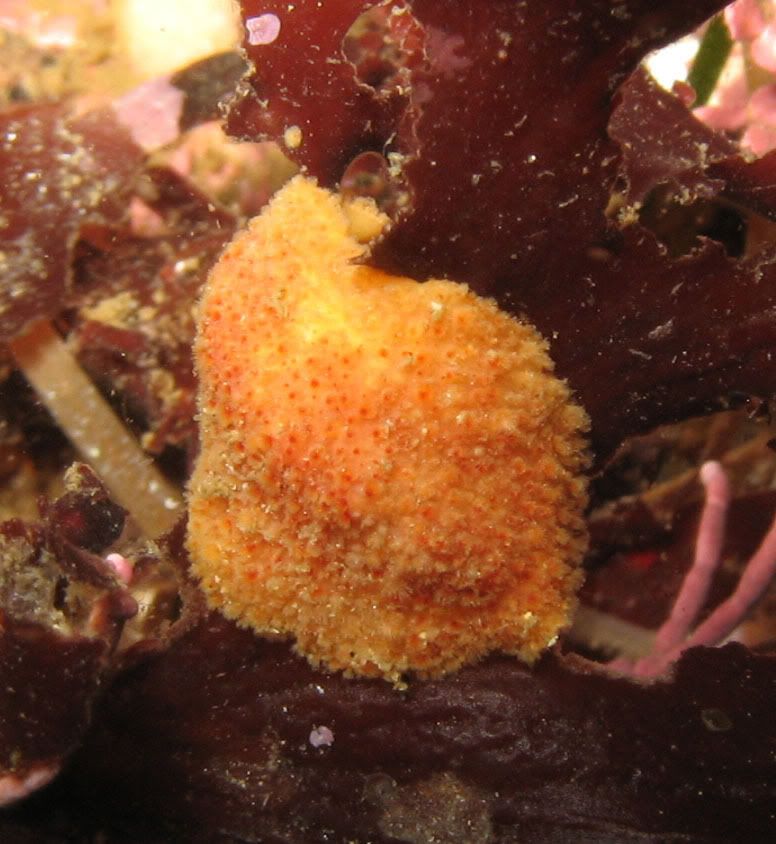

Here are a couple of more close-up shots. He was so small, we couldn't even tell he had the frontal veil until we were looking at the pictures. Based on the shape and the number of processes on the veil, I'm wondering if perhaps it's a baby Triopha catalinae or some such?


The next one was only marginally bigger, and very nearly the same color. But this one is clearly a dorid of some kind. My first thought was a Rostanga pulchra but the rhinophores are wrong. I can't find anything for a second option. These are pretty much all the pictures we took of him.




And finally, this dorid was about the size of your average Doris montereyensis, but we've never seen markings like these before. Our first thought was Thordisa bimaculata, but the two spots on this guy are more like rings, and his plume seems unique. That's definitely how he carries it, it's not being pulled in because these pix were taken over a period of over a full minute. We frankly have no idea what he is.


Those are our three new-to-us nudibranchs. This last one might be a nudibranch, but we're not sure. It seems to have a slug-like foot at the upper right, and the lower center of it looks like it might be a pulled-in branchial plume. But we can't find anything that matches it.




